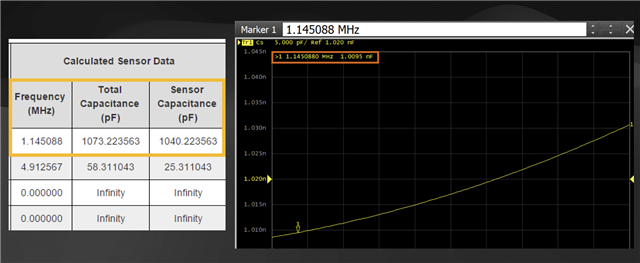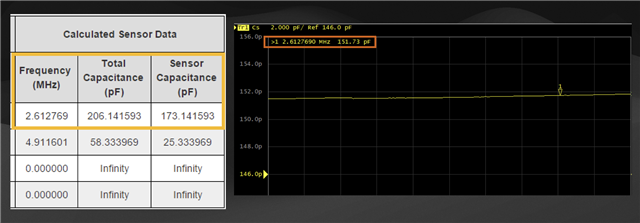Other Parts Discussed in Thread: FDC2214, FDC1004
Hello,
I'm curious about the initial value/ error of the capacitance.
I've tried measuring a few different capacitors with both FDC2214 EVM and with E4990A impedance analyzer from Keysight. It turned out that there's a distinctive difference between the results from the two instruments, with the difference of around 20 pF when the capacitance is small and with 30ish pF when the capacitance is larger.
With the result mentioned above, I want to ask whether the difference is like a base value or a measurement error? It's important for us to get a more accurate value.
Thanks!
Chun-Hsien



